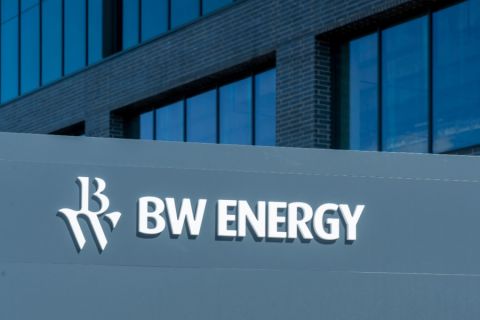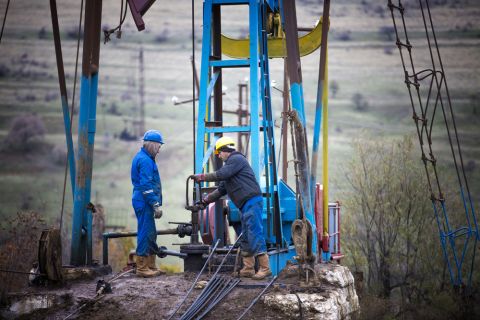By Gavin Sutcliffe, Head of Content and Program, DMG Events Proclamations of “new eras,” “turning points” and “booms” are nothing new -- and certainly not in the energy industry. When was the last time a positive trend, result or forecast was not greeted with the mandatory “cautiously optimistic” response? Has everyone become so cynical that the appearance of good news cannot be met with more than a roll of the eyes? Fortunately not -- at least, not everyone has. Last year the International Energy Agency announced a “Golden Age for Gas” had arrived on the back of increasing round-the-world demand and a considerable step towards the commodity becoming a truly global market. Challenges remain of course, in particular the price of gas in key regions including much of Europe and Asia. These are largely anchored in elderly practices: linking long-term contracts to the cost of fuel oil and other refined products. The up shot is that natural gas prices don’t always reflect supply and demand, and are instead overshadowed by oil prices. But, times change. In the last decade or so, the natural gas market has been edging towards “gas-to-gas pricing,” where the commodity is priced against its own spot market rather than the costs of fuel oil or even coal. Popular in the U.K., most of North America and in Australia, it accounts for about a third of all global natural gas supplies. Despite demand for reform from European importers, the rest remains inked to oil prices. So how will gas leaders and policy makers secure a better deal in the future? The energy policy in Europe has changed dramatically, post Fukushima, with an end to the development and the eventual phasing out of nuclear power in Germany -- with enormous ramifications and potential rewards for gas. North America underwent a virtual revolution thanks to the growth of the now-booming shale gas industry. Technological advancements have seen shale gas transform the United States into a producer of excess gas, when just a few years ago it was one of the world’s biggest consumers. And while Australia emerged as the top contender to feed Asia’s growing appetite for energy, both North America and China could throw the proverbial spanner in the works. The world’s two largest economies sit on huge shale reserves and the push to become gas exporters creates serious competition for those Down Under. The opportunities and challenges are clear -- but who will step up? It’s for those in the gas industry to seize such opportunities themselves, through debate, sharing of ideas and practices and shouting from the rooftops about the benefits of the commodity. With their eyes firmly on this prize, those leaders, industry champions and innovators will come together at one of the world’s most respected gas conferences -- Gastech -- in London this year. A few weeks after the Olympic Games have wrapped, the conference in October -- hosted by BG Group and attended by a wealth of global leaders -- will focus on the “Golden Age for Gas” debate. For 40 years, Gastech has welcomed world energy leaders, kings, prime ministers and industry chairmen for high-level strategic debate through a global leadership panel in the morning and specialist regional panels in the afternoon. These panels have been developed to cover the top issues facing the global gas community, based on research by the Gastech governing body, which consists of 30 of the world’s leading gas executives and engineers. What remains clear is that any Golden Age for the global gas industry will only happen if those in the industry take the lead in the debate and stake their place at the global low-carbon economic table. Editor’s Note: Gavin Sutcliffe is responsible for developing content for Gastech 2012, Oct. 8-11 at London’s Excel, and major energy events and conferences on behalf of dmg::events. More information on Gastech is available.
Recommended Reading
E&P BW Energy Undergoes ‘Technical’ Ownership Restructuring
2024-05-08 - The restructuring will not involve any change to the ultimate control of BW Energy as the shares currently held by BW Group will be sold to BW Energy Holdings.
Wood Mackenzie Appoints Jason Liu as CEO
2024-05-07 - Liu replaces former CEO Mark Brinin, who is departing to pursue other opportunities, Wood Mackenzie said.
Hess Midstream Subsidiary Plans Private Offering of Senior Notes
2024-05-08 - The proposed issuance is not expected to have a meaningful impact on Hess Midstream’s leverage and credit profile, according to Fitch Ratings.
Exxon Appoints Maria Jelescu Dreyfus to Board
2024-05-08 - Dreyfus is CEO and founder of Ardinall Investment Management, a sustainable investment firm, and currently serves on the board of Cadiz Inc. and Canada-based pension fund CDPQ.
OFS Sector Loses Jobs, but Trade Org Says Growth Potential Remains
2024-05-08 - According to analysis by the Energy Workforce & Technology Council, the OFS job market may still have potential for growth despite a slight decrease in the sector in April.





